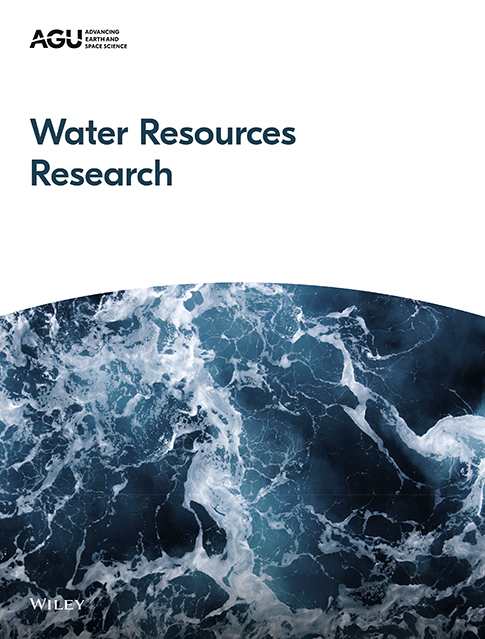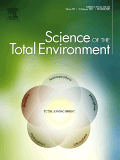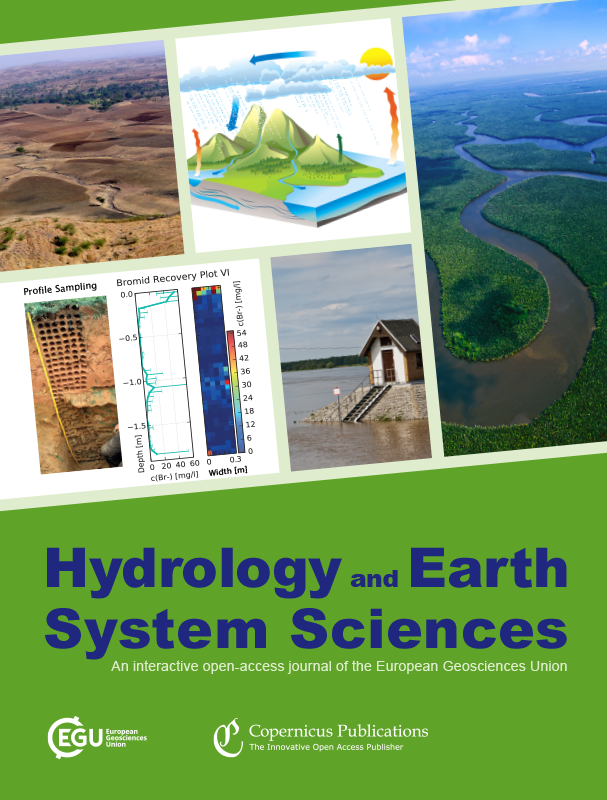- Topic:Environmental change
Catchment functioning under prolonged drought stress: Tracer‐aided ecohydrological modeling in an intensively managed agricultural catchment
The authors investigated the effects of recent years’ droughts on ecohydrological processes in an agricultural catchment using an isotope-aided model (EcH2O-iso). Stream discharge could be sustained by deep, old groundwater, while transpiration fluxes were heavily reduced by drought stress. Crucially, tracer-based water age estimates can be used as potential indicators of drought impacts.
Soil erosion modelling: a global review and statistical analysis
67 scientists reviewed 1700 peer-reviewed articles on soil-erosion modelling. The study addresses the relevance of regions, models, and model validation and includes the open-source database.
Using soil water isotopes to infer the influence of contrasting urban green space on ecohydrological partitioning
The authors studied water partitioning in different urban green spaces using stable isotopes. During the warm and dry 2019, evapotranspiration losses of grass and trees were higher than those of potentially more drought-resilient shrub. The study contributes to a better understanding of urban ecohydrological partitioning, which will be essential to sustainably meet water demands of urban green.
Species-specific macroinvertebrate responses to climate and land use scenarios in a Mediterranean catchment revealed by an integrated modelling approach
The authors applied an integrated modelling approach to address the complex species-specific macroinvertebrate responses to climate and land-use changes. The results indicate the non-linear response of species within the commonly used Ephemeroptera, Plecoptera and Trichoptera taxa to altered streamflow conditions and highlight the need to include the species level responses in such studies.
Depth-discrete metagenomics reveals the roles of microbes in biogeochemical cycling in the tropical freshwater Lake Tanganyika
The authors profiled the microbial community in Lake Tanganyika down to a kilometer deep and investigated their role in biogeochemical cycling. The microbial community in the surface waters was not all that different from a temperate lake, the anoxic water contained high abundances of Archaea (30%) and uncultured candidate phyla with high genomic capacity for nitrogen and sulfur cycling.
Performance of one-dimensional hydrodynamic lake models during short-term extreme weather events
Little is known about the accuracy of numerical lake models during short-term events. Three 1D lake models reproduced the overall impacts of storms and heatwaves well. Timing of effects was simulated accurately and there was little consistent bias. Uncertainty in simulations increased during extremes compared to reference periods.
The combined effects of climate change and river fragmentation on the distribution of Andean Amazon fishes
Combining species distribution models and functional traits of Andean Amazon fishes, coupled with dam locations and climatic projections, the authors evaluated the potential impacts of future climate on species ranges, investigated the combined impact of river fragmentation and climate change and tested the relationships between these impacts and species functional traits.
The complexity of urban eco-evolutionary dynamics
Urbanization is a complex process that impacts both the ecology and evolution of species. The researchers identified five key urban drivers of this change and highlight the direct consequences of urbanization-driven eco-evolutionary change for nature’s contributions to people. They subsequently explored five emerging complexities that need to be tackled in future research.
Urbanization drives cross-taxon declines in abundance and diversity at multiple spatial scales
This comprehensive study analyses the relationship between urbanization and biodiversity across multiple aquatic and terrestrial animal groups and at multiple spatial scales. The study reveals an overall strong negative impact of urbanization on both abundance and species richness within habitat patches. The study highlights the importance of considering multiple spatial scales and taxa.
Performance of one-dimensional hydrodynamic lake models during short-term extreme weather events
Three 1D lake models reproduced the overall impacts of storms and heatwaves well. The timing of effects was simulated accurately. Uncertainty in simulations increased during extremes compared to reference periods. Increased uncertainty should be kept in mind when applying models to extreme events.










